Microsoft Announces Windows 8.1 Update - Desktop as a First Class Citizen
by Brett Howse on April 3, 2014 9:00 AM EST- Posted in
- Software
- Operating Systems
- Microsoft
- Windows 8
- BUILD
- Windows 8.1
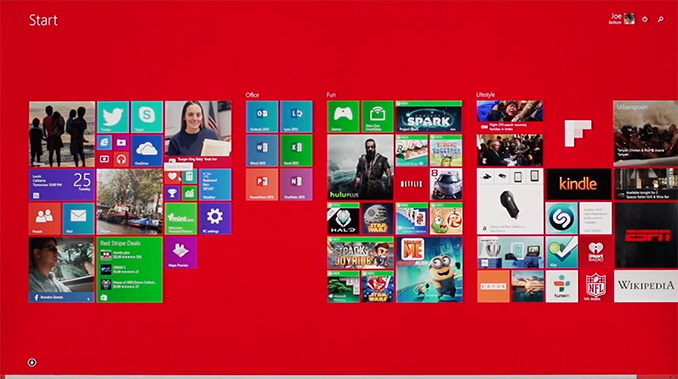
Microsoft’s day 1 keynote for the BUILD developer conference detailed an update to Windows coming on the next scheduled patch Tuesday called 8.1 Update. Notice it’s not called Update 1, which means there may or may not be more of these updates later in the year. Hopefully there’s more.
Windows 8 launched about 18 months ago. With that launch, Windows was put on a rapid release cycle, which resulted in Windows 8.1 a mere 12 months later. When Windows 8 launched, “touch first” was the talking point used during the reveal. Windows 8 was likely the biggest ever change to Windows, and was a pretty big gamble on Microsoft’s part. For the project head of Windows 8, it didn’t work out with Steven Sinofsky leaving the company only a couple of weeks after the launch event. As a product launch, it certainly didn’t halt the decline in PC sales that were already beginning.
Much has been said of Windows 8 since its launch, some of it good, some of it bad. Most of the bad focused on how Microsoft forced a touch interface and mobile app system onto a market that was, especially at the time, dominated by non-touch PCs and devices. A lot of the criticism was valid, and was likely exaggerated due to there being no way to re-enable any legacy mode. In the history of Windows, there has always been a way to go back to the old version’s look and feel, but keep the new functionality. In the case of Windows 8, this didn’t happen, and many people don’t appreciate that.
To add extra fuel to the fire, even the touch first interface (called Modern by this point) wasn’t finished. Many settings and functionality could only be accessed by the desktop control panel which was decidedly non-touch. Even though Windows 8 was actually quite a good touch based operating system, it wasn’t finished. The design decisions of the touch based system were all based on edge gestures, but there were no obvious way to know that.
Windows 8.1 addressed a lot of the complaints. The Start Button was back – even if its functionality was not the same. The Start button could be configured to launch into the All Apps mode rather than the Start Screen of Windows 8. You could choose to boot directly to the desktop. And on the touch side, some of the gestures were changed, and many more of the PC settings could be configured from the Modern interface. As a bonus (or not – depending on who you are) everything was synced with SkyDrive, and SkyDrive was installed on both x86 and ARM versions for file sync with the cloud. The built in apps were much better, the store was overhauled, and more people were happy.
If Windows 8 was touch first, then 8.1 Update is most definitely keyboard/mouse first. Almost every single feature added in the Update is geared towards making the Desktop environment a first class citizen again, and it’s wonderful – and I say that as someone who uses and enjoys Windows 8 and 8.1 every day.
Traditional PCs – desktops and laptops – will now boot to the desktop by default. PC makers building tablets or types of hybrid machines with touchscreens can now set a flag to identify the device as a Slate, which will make them boot to the Start Screen. The Modern interface is now aware of how it’s being used. If you are using touch, it acts just like 8.1, but if you are using a keyboard and mouse, there are now context boxes on the right click menus. Moving the mouse to the top of the screen reveals the traditional minimize and close options. The task bar is now available on the Start Screen. Hidden functions like Search and the Power button are now available right on the Start Screen by your login ID.
And speaking of the task bar, as in interim step until further Desktop/Modern integration happens is the ability to pin Modern apps to the taskbar. They still open the full screen or snapped Modern app, but it’s an easy way to multitask with desktop and modern apps. Microsoft also demonstrated further integration coming in a future update. Whether that is an 8.1 Update 2 or Windows 9 wasn’t specified, but it brings Modern apps to the desktop in a window. I think this will really increase the usefulness of Modern apps. Full screen on a 10” tablet is fine, but when a desktop is equipped with 22” to 32” monitors, there’s a LOT of wasted real estate by running these apps in full screen, or even split screen mode. This is a huge change from the original vision of Windows 8, and if anything can make Modern apps more useful, this is it.
Also with apps, one of the biggest issues with Windows 8 was that any app you installed dumped at least one tile onto the Start Screen. For Modern apps, this was mostly useful, since the tiles were usually live, but with desktop apps like Office, you could easily get 10-20 new tiles on your Start Screen which was a huge pain. So for Windows 8.1, they removed the auto-created tile on the Start Screen, and put it on the All Apps screen. This solved one issue, but certainly created a new one because once you installed an app, you had no idea where it was. For 8.1 Update, they are adding a text notification at the bottom of the screen to let you know that you’ve got new apps there waiting to be used. I think this is an improvement, but the obvious solution is to add an option in the store to pin the app to the start screen automatically.
And the final piece with the app situation is Universal Apps. At long last, common code can be used to develop for phones, tablets, laptops, and desktops. Visual Studio will now build one application, which can have both Windows 8/RT and Windows Phone binaries. This also enables the store to allow one app purchase to be installed on both platforms without having to re-purchase the app as you do now. The keynote demonstration was the Modern version of Office, coded to WinRT, and running on both the desktop and phone with the same code base. Even better, with the update developers can now target Desktop apps (due to the windowed mode), Tablet apps, Phone apps, and even Xbox One apps, all with common code. This is a big win for developers, and I’m sure Microsoft is hoping it draws more developers to WinRT, which in turn will be a big win for consumers.
Another notable change to Windows 8.1 Update is a new build which enables Windows on low end PCs. Windows has been shrunk, and the memory usage has been reduced, enabling the installation of Windows on devices with 1 GB of RAM, and 16 GB of storage. Previous to this, it’s been difficult for hardware partners to be price competitive with Chrome OS devices and Android tablets because the Bill of Materials would be higher. This is coupled with a new licensing change, where Windows (Windows x86, RT, and Windows Phone) is now available free to OEMs for all devices with a screen size of less than 9”. Although I would never buy a tablet with 16 GB of storage, Microsoft should now be able to be price competitive with Android and Chromebooks.
There are also some additional features for Businesses. Mobile Device Management (MDM) is now extended, and IE 11 now has a compatibility mode which can be enabled for intranet sites which require IE 8 functionality. This feature alone should allow companies that were stuck on XP a new way to get off of the aging OS, assuming they are not stuck with web apps that require IE 6 or lower.
This was an interesting keynote. Windows 8 was all about touch, and this keynote was all about restoring functionality to Windows that people have grown accustomed to over the years. The demos of both Modern apps running in a window with a start menu, and Office as a universal app were certainly a clear indication that the Steven Sinofsky days are over. Windows is changing again. No longer will it be “touch first” but instead be any input method you prefer. And I don’t mean to imply that they are taking away any touch functionality either – both are now equally supported which is how it needs to be.


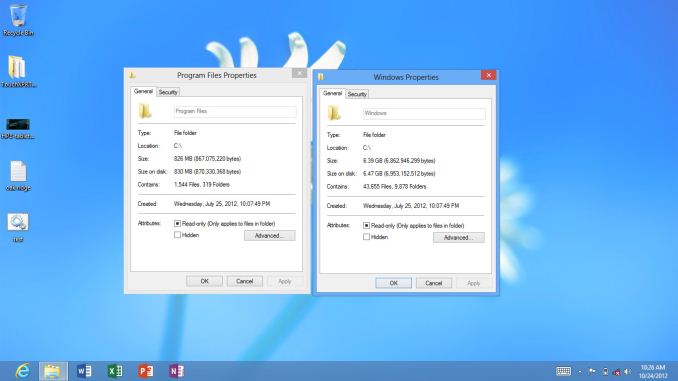
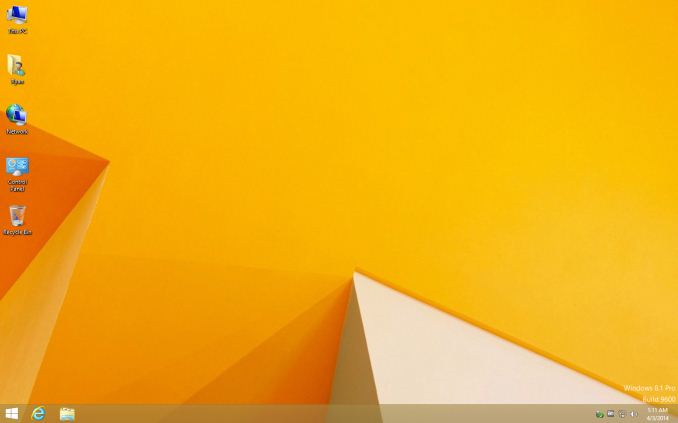
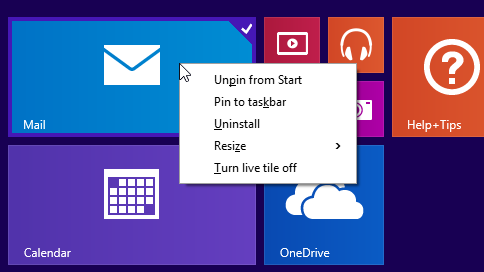
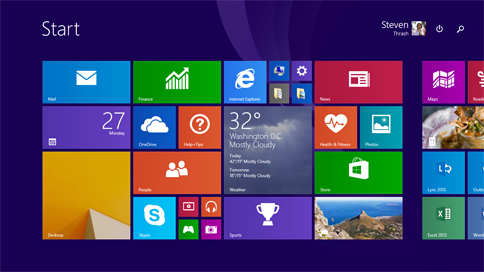
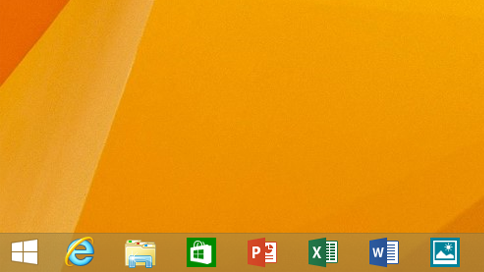
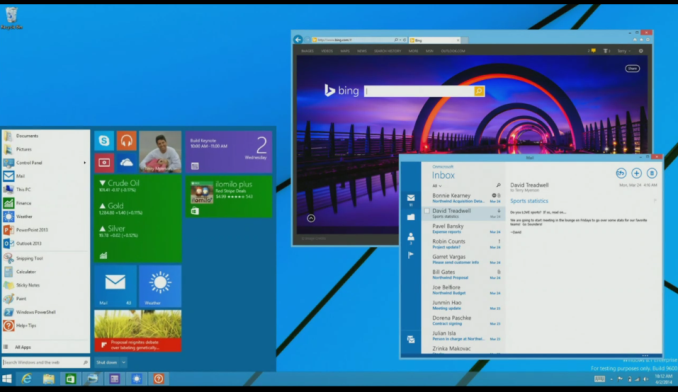

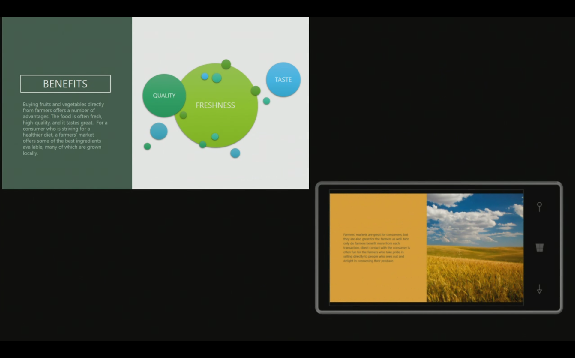








149 Comments
View All Comments
RGagne1975 - Thursday, April 3, 2014 - link
I've been using Windows 8.1 with the program Classic Start Menu for several months now. I have not looked back at Windows 7 since. This new update looks like it will bring Windows 8.1 closer to what it should have been to start with.Alexey291 - Thursday, April 3, 2014 - link
What are the real advantages when coming from 7?I don't intend to use IE or bother with Metro. So is there any REAL point in paying for essentially the same OS?
I'm not trying to troll here. I just don't see it.
nevertell - Thursday, April 3, 2014 - link
Yes, there are. Power consumption, kernel updates. That's the short answer.If you actually bothered to use it, you'd feel the improvements they've made at least on the filesystem side. You also get loads of peripheral device instability such as WiFi dropping out until you reboot it, USB drivers getting broken upon a Windows update and the like. This sounds sarcastic, but these are the mainstream pros and cons with windows 8. Also, if you use enterprise WPA, well tough luck. There is no built in support for that, as far as I could tell. Maybe it was the home/professional differentiation, but with a Windows 8 laptop, my mate could not log on to the eduroam wireless network for universities.
Alexey291 - Thursday, April 3, 2014 - link
So essentially nothing interesting for a desktop user/gamer.I've not used windows on anything mobile for a looong time. But yeah fair enough. Despite the big name the o/s is just a small incremental upgrade over win7
And yeah I did bother to use it albeit for a short time back when the preview edition was bouncing around. How should I put it... It didn't inspire me to pay money for it.
davepermen - Thursday, April 3, 2014 - link
if performance gains isn't enough for you as a gamer, then, what is?it boots much faster, it uses less ram, it's more snappy. it uses less power == pc can clock higher. etc.. but metro and the metro apps are actually worth exploring, even on a desktop. i moved from desktop to metro apps for all i can. which means, on a new pc, i just log in once, and all is already there. zero manual efford.
Alexey291 - Thursday, April 3, 2014 - link
I'm vsync'd at 60fps in the vast majority of my games. I have no idea why I'd want more fake performance. For most normal people (who have grown out of extreme overclocking and "professional gaming") gaming means playing games on a good pc. Not trying to get 300fps out of CSS for the sake of getting 300 fps.Besides those performance benefits are not only REALLY small but are mostly unproven. Like the gentleman below said. Its more or less on par.
Also... PC doesn't clock higher because windows uses less power :| What are you even... I have no idea how to talk to you anymore...
Snappier interface is not important when windows is a shell for launching games from steam. (or from desktop shortcuts). I have mobile devices for most of the rest of things. They are more convenient. That's just the way it is. Windows is only there because backwards compatibility with my 300 game steam library is important.
And metro apps? What apps? Facebook Skype and their ilk? I have a mobile phone (and a tablet) for mobile apps with a much larger app store I might add.
Nope still don't see it.
abhaxus - Thursday, April 3, 2014 - link
The fact that you just used CBS as your example while condescending to him about what real gamers want makes me think that you haven't been a "real gamer" since CSS was a big game. It's ok that you don't like windows 8 bro, but you don't have to be a condescending prick to get your point across.Lol @ you being vsync capped on your 300 steam game library. 10 year old A-listers and indie games are not exactly the performance benchmarks most look to.
Alexey291 - Thursday, April 3, 2014 - link
So you have something constructive to add or you are going to throw ad-hominem accusations around some more? ;)Besides name me a 2013 AAA title (rome2 doesn't count its just badly optimised and is generally bad). Which was made on a demanding engine. Something that isn't UE3 (which is 8 years old now). Tomb Raider is the only thing that comes to mind? And only that because of the cool hair effect.
turtlenip - Saturday, April 5, 2014 - link
He's not being ad-hominem at all. He called you a condescending prick because you acted like one. You showed a clear bias toward Windows 8 and replied with snide and rude remarks.This is from an objective pov since I was not involved in the argument.
Oh and Windows 8 is faster. So quite spewing nonsense that they are "unproven".
http://www.hardocp.com/article/2013/11/24/battlefi...
Donkey2008 - Saturday, April 5, 2014 - link
I ran my own benchmarks in BF3, BF4 and Planetside 2 with a GTX 670; I saw virtually no difference between Win8 and Win7. That's "proven" enough for me.